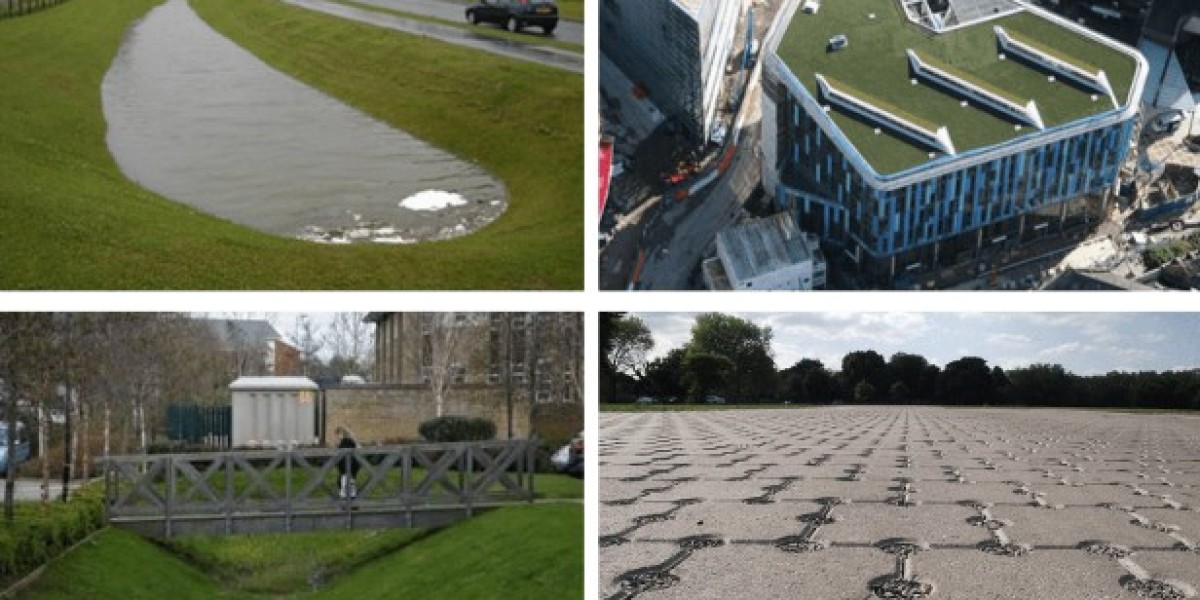In the face of rapid urbanization and the escalating impacts of climate change, the imperative for sustainable solutions has never been more critical. Sustainable Drainage Systems (SuDS) emerged as a revolutionary paradigm in the management of excess rainwater, heralding a transformative era in urban planning. This article delves into the nuanced intricacies of SuDS, unraveling its core principles, delineating its multifaceted benefits, and emphasizing the pivotal role it assumes in nurturing urban environments that are both resilient to environmental challenges and committed to sustainability.
Understanding Sustainable Drainage Systems
Sustainable Drainage Systems, commonly known as SuDS, mark a paradigm shift in stormwater management. Unlike traditional systems focused solely on water transportation, SuDS prioritizes sustainability, biodiversity, and water quality. At their core, SuDS mimic natural processes, slowing, storing, and filtering rainwater close to its source.
Key Components of SuDS
SuDS incorporates various components designed to manage stormwater in an environmentally conscious manner. Permeable surfaces, green roofs, swales, ponds, and infiltration basins form the core elements of SuDS. Working synergistically, these components reduce surface runoff, promote groundwater recharge, and enhance water quality by naturally filtering pollutants. Mimicking natural drainage patterns, SuDS mitigate flood risk and contribute to the overall well-being of urban ecosystems.
The natural filtration mechanisms embedded in SuDS play a pivotal role in purifying stormwater, removing pollutants, and mitigating flood risk. By replicating natural drainage patterns, SuDS become integral contributors to the overall well-being of urban ecosystems, ensuring a harmonious and sustainable coexistence between human infrastructure and the natural environment.
Benefits of SuDS
The advantages of sustainable drainage systems extend beyond water management. Primary among them is flood risk reduction, as these systems effectively slow down and distribute stormwater, minimizing the potential for overwhelming drainage systems. SuDS also enhances biodiversity by creating green spaces and habitats for wildlife within urban areas. Additionally, they improve water quality by naturally filtering pollutants, resulting in cleaner water entering local water bodies.
Flood Risk Reduction
SuDS act as natural buffers, slowing and distributing stormwater.
This mitigates flood risk by preventing overwhelming drainage systems.
Communities benefit from reduced vulnerability to flooding.
Biodiversity Enhancement
Green infrastructure elements like green roofs and permeable pavements create urban oases.
These areas serve as habitats for various plant and animal species.
The interconnected green spaces promote biodiversity, contributing to urban ecosystem health.
Water Quality Improvement
SuDS employs natural filtration through permeable surfaces and vegetation.
Runoff is captured and treated, removing pollutants like heavy metals and oils.
The result is a significant enhancement of water quality before it reaches local water bodies.
Aesthetic and Recreational Appeal
Integrating SuDS into urban planning enhances the overall visual appeal.
Green spaces offer residents and visitors recreational areas and spaces for relaxation.
The aesthetic improvements contribute to a more pleasant and enjoyable urban environment.
Holistic Urban Planning
SuDS aligns with sustainability principles, promoting environmentally conscious practices.
They contribute to urban resilience by addressing both water management and ecological considerations.
This holistic approach ensures a balanced coexistence between urban infrastructure and the natural environment, fostering sustainable urban development.
Challenges and Future Prospects
Despite the promising outlook, challenges such as land availability, maintenance, and public awareness need addressing. However, as the world acknowledges the urgency of sustainable urban development, future prospects for widespread SuDS implementation are bright. Continued research and technological advancements will likely pave the way for more innovative stormwater management approaches.
Conclusion
Sustainable drainage systems present a holistic, eco-friendly alternative to traditional stormwater management. As urban areas grapple with the consequences of climate change, SuDS emerges as beacons of innovation, fostering resilient, sustainable, and livable cities for generations to come. Embracing SuDS is not merely a choice; it's a commitment to a healthier, more sustainable future.








